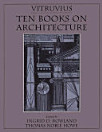On Architecture
เกี่ยวกับ eBook เล่มนี้
การให้คะแนนและรีวิว
เกี่ยวกับผู้แต่ง
Marcus Vitruvius Pollio (late 1st century B.C.), was a Roman military architect and engineer, and an expert in ballistic machines in particular.
Robert Tavernor studied architecture in London, Rome and Cambridge and practices as a consultant architect. He was professor of Architecture at the universities of Edinburgh and Bath, and is currently Professor of Architecture and Urban Design at the London School of Economics and Political Science (LSE).
Richard Schofield read Classics at Oxford in the late 1960s, then architectural history at the Courtauld Institute of Art, London. After working at the University of Nottingham for many years, he moved to the Istituto universitario di architettura di Venezia in 1997, where he is the Professor of the History of Architecture.






